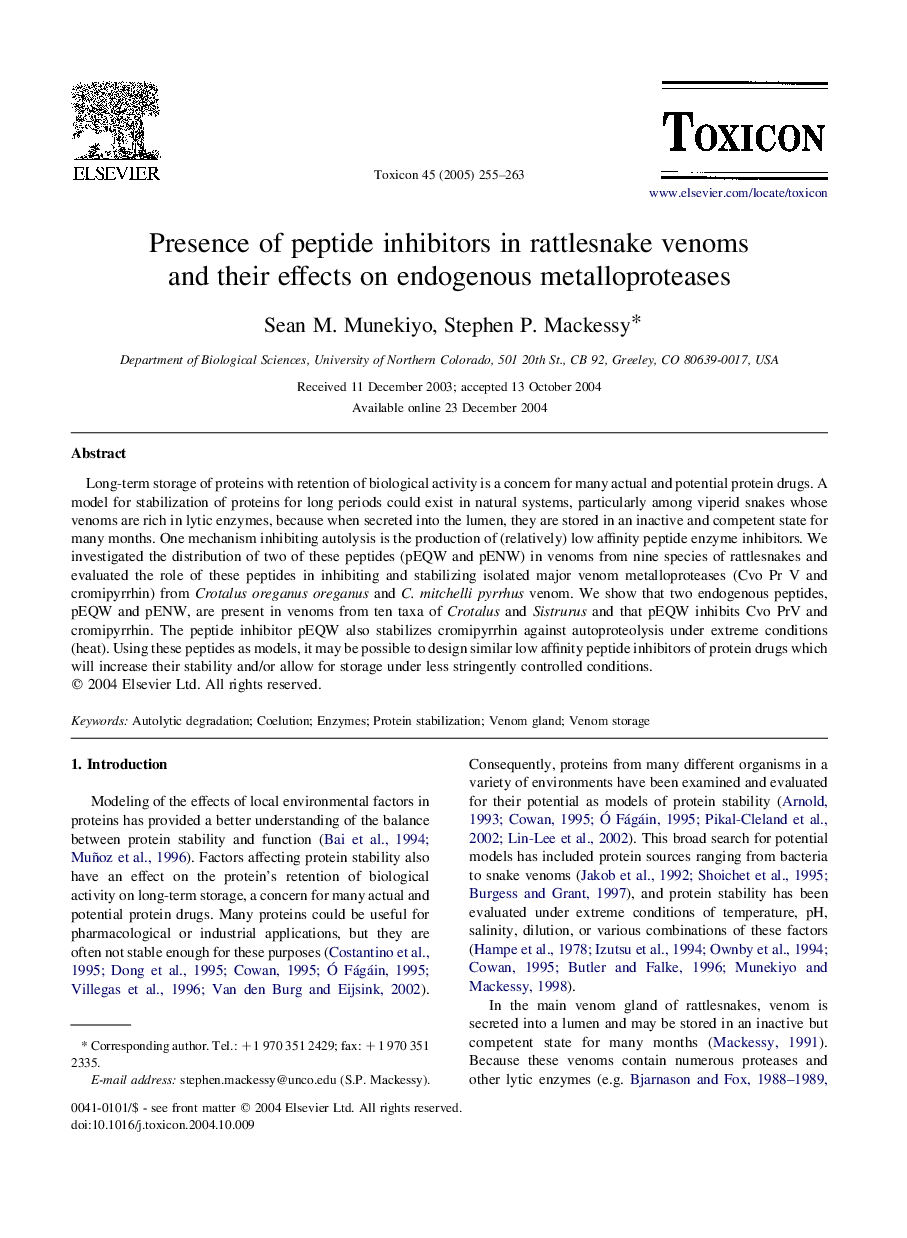| Article ID | Journal | Published Year | Pages | File Type |
|---|---|---|---|---|
| 10881652 | Toxicon | 2005 | 9 Pages |
Abstract
Long-term storage of proteins with retention of biological activity is a concern for many actual and potential protein drugs. A model for stabilization of proteins for long periods could exist in natural systems, particularly among viperid snakes whose venoms are rich in lytic enzymes, because when secreted into the lumen, they are stored in an inactive and competent state for many months. One mechanism inhibiting autolysis is the production of (relatively) low affinity peptide enzyme inhibitors. We investigated the distribution of two of these peptides (pEQW and pENW) in venoms from nine species of rattlesnakes and evaluated the role of these peptides in inhibiting and stabilizing isolated major venom metalloproteases (Cvo Pr V and cromipyrrhin) from Crotalus oreganus oreganus and C. mitchelli pyrrhus venom. We show that two endogenous peptides, pEQW and pENW, are present in venoms from ten taxa of Crotalus and Sistrurus and that pEQW inhibits Cvo PrV and cromipyrrhin. The peptide inhibitor pEQW also stabilizes cromipyrrhin against autoproteolysis under extreme conditions (heat). Using these peptides as models, it may be possible to design similar low affinity peptide inhibitors of protein drugs which will increase their stability and/or allow for storage under less stringently controlled conditions.
Related Topics
Life Sciences
Biochemistry, Genetics and Molecular Biology
Biochemistry, Genetics and Molecular Biology (General)
Authors
Sean M. Munekiyo, Stephen P. Mackessy,
